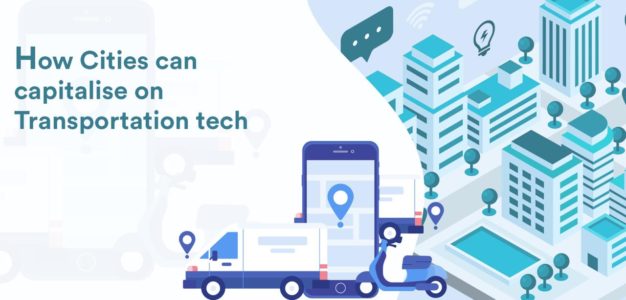As population surges to an overwhelming number, transportation infrastructure is being threatened. How should we respond?
Urban populations seem to be growing rapidly in India, and the threat to the transportation infrastructure is getting out of hands, faster than presumed. This urban sprawl adds to the already culminating congestion, further worsening air purity and deteriorating quality of life. More, this impacts the existing city economies and as recorded has contributed to an estimated 7 million premature deaths in 2018, i.e. around people aged from 18-45 were involved in 70% of road accidents as per the report by Ministry of Road Transport and Highways.
Future of Urban Mobility in Contrast With the Rising Population
As per the statistics, our understanding of the underlying reasons for consistent congestion is still evolving and a general view is that urbanization leads to ever-expanding cities and improved rates of motorization. These two peculiarities ultimately lead to complete congestion and gridlock. In addition to this, economic growth is also responsible to bring about more reliable travel infrastructure, which further expedites uncongested mobility and enhances the speed of urban mobility. So far, Indian cities have experienced both these trends and these changes are happening at a faster pace in India than in the US and UK.

Capitalizing on the Emerging Transportation Technologies: Transportation must be considered as a collective responsibility of all levels of stakeholders. Private and public sectors must work in complete collaboration in order to devise and develop transportation solutions that are centric to Indian transportation issues. Few investors (private) can take complete advantage of the market opportunities and assist in transforming India’s transportation system. With active private sector participation, expertise, latest technologies and capital can be brought into the transportation belt of India. In addition to this, citizens can be made active partners in before-mentioned initiatives. This mass-participation can be accomplished through community-driven programmes.
AeoLogic Capable of Delivering Change; How?
Trip Planning and Dynamic Routing: This includes freight routing, multimodal trip planning, real-time traffic management, wayfinding and data analytics. Cities like Paris, Singapore and Los Angeles are experimenting on MaaS or Mobility as a service. This tech basically relies on a digital platform that integrates booking, end-to-end trip planning, payment services and electronic ticketing access all public or private modes of transportation.
Vehicle-to-infrastructure, Vehicle-to-vehicle connectivity and smart infrastructure can help ease the traffic flow i.e. through traffic lights, lower electrical consumption through smart street lights, reduce number of road accidents through smart crosswalks and vehicle connectivity. Along with these, with the implementation of smart transportation infrastructure can also monitor air quality, and service an expanding fleet of electronic vehicles which can be accomplished through an electric charging station.
New Modes of Mobility: Carsharing, e-scooters, bike-sharing, micro-transit, and ride-hailing are few practises that can be adopted soon enough but only upon mass-notice. The mass adoption of electric vehicles and the evolution of autonomous vehicles can dramatically reshape urban mobility.
Real Estate Utilization: More sophisticated curb management, smart parking and smart metering are few sustainable solutions that can readily impact transportation infrastructure for good.
Payments and Ticketing: A single charge system or a unified payment method, can help the public to encompass the ability to pay for the multi-modal trip. In addition to this Aeologic also suggests the adoption of usage-based pricing and surge-based pricing.
Final Words: With these solutions in place, India could leapfrog readily from the conventional transportation model to an electric, shared, and a connected mobility future, all done by capitalising on a wonderful confluence of few dynamic technical capabilities.
This will also lead to an emerging entrepreneurial culture which would solely be built on essential government plans and policies.





